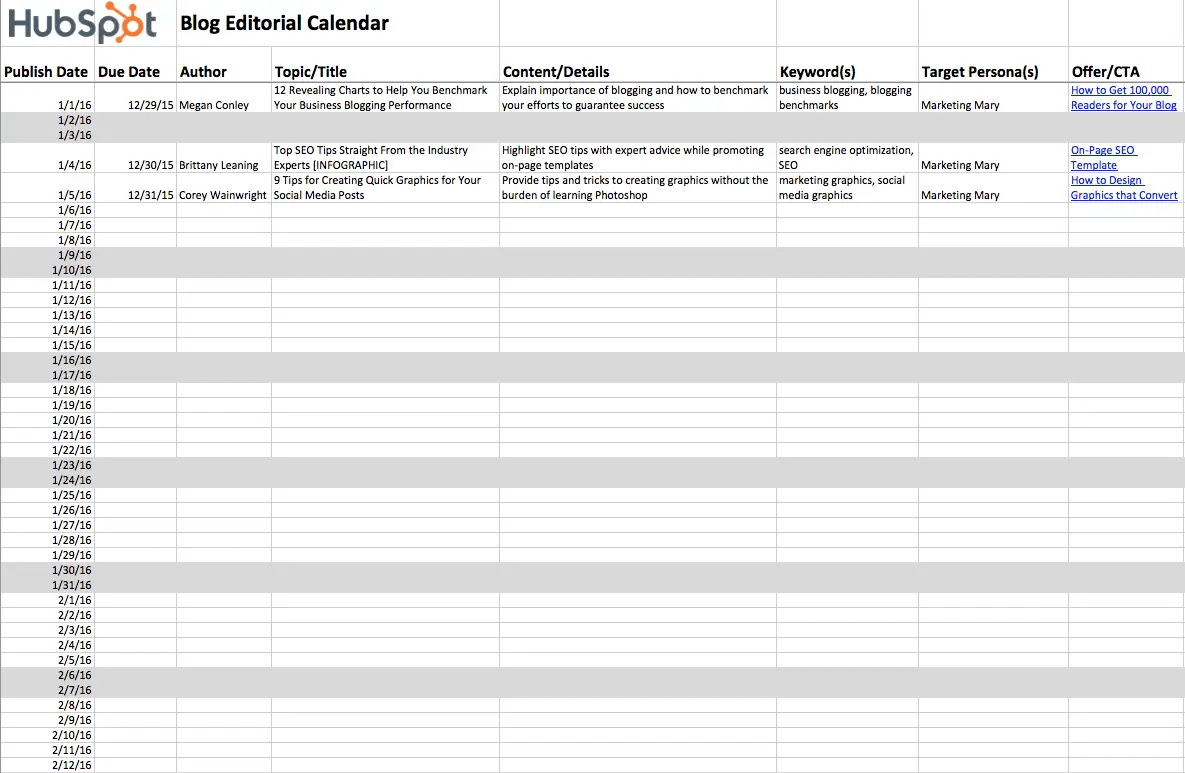Blogging these days is not limited to travellers and food lovers. Anyone can blog about anything, particularly if you have an audience that is here for it. Accounting is no different – it is a profession you practice day-to-day, so surely you have various anecdotes, actionable tips and predictions around it that are worth sharing.
Good news is for accountants, a blog is the most interesting way to advertise your services to clients and provide financial education for the masses, and it is a long-term strategy that is not going away anytime soon.
Blogging helps boost search engine rankings and increases the likelihood of being found in organic search by 4X. Websites with blogs have 434% more indexed pages and generate 67% more monthly leads.
So, if you are looking to join the blogging movement but are confused and don’t know what to do first – don’t worry. We have put together a list of seven blogging tips for accountants you will find useful. Check it out:
1. Find your niche
One of the standard blogging tips for accountants is to find a niche. Think about the clients you deal with. Do you manage accounts to clients in the food industry, or do you offer advisory services to the ones in the banking sector? Make sure your blog posts cater to those industries that are most relevant to your work, and this closely relates to knowing your target audience.
Alternatively, ask yourself which accounting area is your forte: is it forensic accounting or accounting for SMEs? Identify topics from a subsection of accounting that you are well-acquainted with. That will make your blog more reliable in the eyes of your audience. Moreover, your natural writing style will shine through.
2. Learn from competitors and external publications
With the help of online tools such as BuzzSumo, you can run a search on what the accounting industry is talking about, what blog topics, op-eds or articles are trending, and which competitors (e.g. accounting businesses) are producing high-performing content.
You can develop a particular blogging style by reading their blogs and third-party publications such as AccountingWeb. Maybe you prefer to communicate your thoughts in a more straightforward manner and naturally deviate towards listicles.
Or maybe you want to include memes or handmade sketches to grab the attention of your readers if the topic is tedious or complicated.
Alternatively, you may be more traditional and prefer to write paragraphs with subheadings, explaining every point in detail. Some people prefer using a formal tone, and others like to infuse humour in their writing style. Whatever you do, make sure that it is the style you feel most comfortable with.
Tip: One important blogging tip for accountants is to read as much as you can. It is not only essential in the pursuit of knowledge, but also it will help you carve your blogging voice.
3. Improve your business website
The best way to come up with a plethora of ideas is by brainstorming with your practice staff: the more ideas, the better. In fact, the more unusual the ideas, the better. Let there be free-flowing interaction amongst your team.
When ideas come to you, it is essential to write them down quickly. Have a notepad or sticky notes at hand, or use the notes app on your phone. Don’t just do that, try to create a monthly content calendar.
Doing so will help your blogging schedule stay on track, let you see what is coming next and save you from the panic of having to write something at the last minute. A content calendar will help you visualise how your blogging activity is distributed throughout the month.
Tip: Download HubSpot’s Blog Editorial Calendar. It is simple-to-use and will compel you to think of the tiniest of details related to blogging.

4. Create a basic blog post structure
It is challenging to write an informative blog post if you don’t do proper research. That could include reading case studies, eBooks and even infographics on a particular topic to understand how information is presented in those content pieces, or to form your opinion for the blog post.
Therefore, create an outline and research within that. There is too much information available on the internet. An outline will help you research in an organised manner. For blogging, this writing tip is beneficial for accountants.
Moreover, if you plan to add several stats, case studies and infographics in the blog post, the outline will help you structure all the information correctly.
Next, write each aspect of the blog post – introduction + main body text (comprising subheadings) + conclusion – in bullet points, and then expand those points.
Don’t forget to insert a Call-To-Action (CTA) at the bottom of your blog post. After all, you would want your readers not just to read your blog post but also take action while they are on your website. Some examples of CTAs include: “sign up for a free consultation,” “contact us,” or “register for free.”
Tip: Jot down the points on a piece of paper before typing them out on your laptop because it is a more relaxed exercise. However, if you are short on time, working on a Word Doc is fine too.
5. Take advantage of client referrals
In the same way that paragraphs are used to break up the points, images and videos do just the same, making the blog post more digestible. However, you can’t just use any image in your content. Here is a breakdown of the image types for you:
5.1 Public domain: You don’t need permission to use these images, and you don’t have to cite the source although it is common courtesy to do so. Here’s how you can look for such pictures on Google.
- Run a Google search on the topic of your choice. (We did it for “blogging tips for accountants”)
- Then, click on the “Images” tab, where you will come across a “Tools” button.
- On clicking that, you will be able to view five new tabs.
- Click “Usage Rights” and “select Labeled for reuse.”
You can use all the images after applying this filter without citing the source.

5.2 Creative commons: The creator permits you to use the image, but you need to give the creator credit.
5.3 Royalty-free: You can use this image, but you can’t edit or resell it. Shutterstock sells royalty-free images at a cost.
To find relevant visuals, use the keywords on the topic on Google Images – give proper credits, of course. Alternatively, Burst by Shopify, Pixabay, Pexels, and Unsplash have a brilliant repository of free images for you to use in your blogs.
Tip: If you come across any images, videos or gifs that you like and want to use within your blog content but are unsure of their licenses, credit the source or creator.
6. Advertise your blog
Once published on your website, promote your blog post extemsively, mainly through sharing its link via your social media profiles on LinkedIn, Twitter and Facebook. Also, make sure you have social media share buttons on your blog webpage to allow others to share it with ease.
Reposting on syndication websites such as Quora, Medium, and Reddit can help your blog post catch on and gain more followers.
Alternatively, you could start a newsletter service, where your target audience can subscribe to your blog by giving you their email address. You can thus promote new blog posts on email.
One of the best blogging tips for accountants is reaching out to influencers for promotional purposes. Why not? They can give your blog a big push and instantly bring the spotlight on your business.
Therefore, make a list of people who you think are the headline-makers in your industry and approach them via LinkedIn, Twitter, Facebook, or email – wherever they are most active. While it is essential to be direct with them, don’t be too sales-focused or aggressive.
Their engagement with your blog posts may happen after a couple of weeks, but it will be worth it if you nurture your relationship over time.
7. Improve your Search Engine Optimisation (SEO)
SEO is critical when it comes to boosting website traffic, and goes hand-in-hand with promoting your blog. Thankfully, there are techniques that you can utilise to help you in this department. Here are some of them:
7.1 Having images/gifs/videos and subheadings in the blog post can make it rank high in search engine results.
7.2 Take advantage of websites such as “SEMRush” or “Google Adwords Keyword Tool” to help you to compile a list of keywords to include in your blog posts. Using these tools, you can even see which keywords are being used the maximum number of times by the competitors and are bringing traffic to their websites or blog posts.
7.3 Make sure your ‘meta-titles and meta-descriptions’ use the main keyword. To give you an overview:
A meta title is the title of each page of a website, which helps Google in judging the relevance of the website for a particular search query.
According to Seobility, this is what a meta title looks like ??:


7.4 Including synonyms of keywords will cover the broadest spectrum of search terms that are used. For example, if “blogging tips for accountants” is the primary keyword, you can use words such as “successful blogging tips for accountants or “blogging writing tips for accountants.”
Blogging is hard work. You need to publish content consistently and promote even more aggressively. But guess what? Blogging is also a lot of fun as it enables you to showcase your brand voice and expertise online. So, don’t worry – just research, write and publish.
And if you need help with brainstorming ideas, building a calendar, researching, or even writing blog posts, say hello to us! We are experienced, always bubbling with ideas and committed to writing high-quality and relevant content for our clients.
Learn more about our content marketing services.


